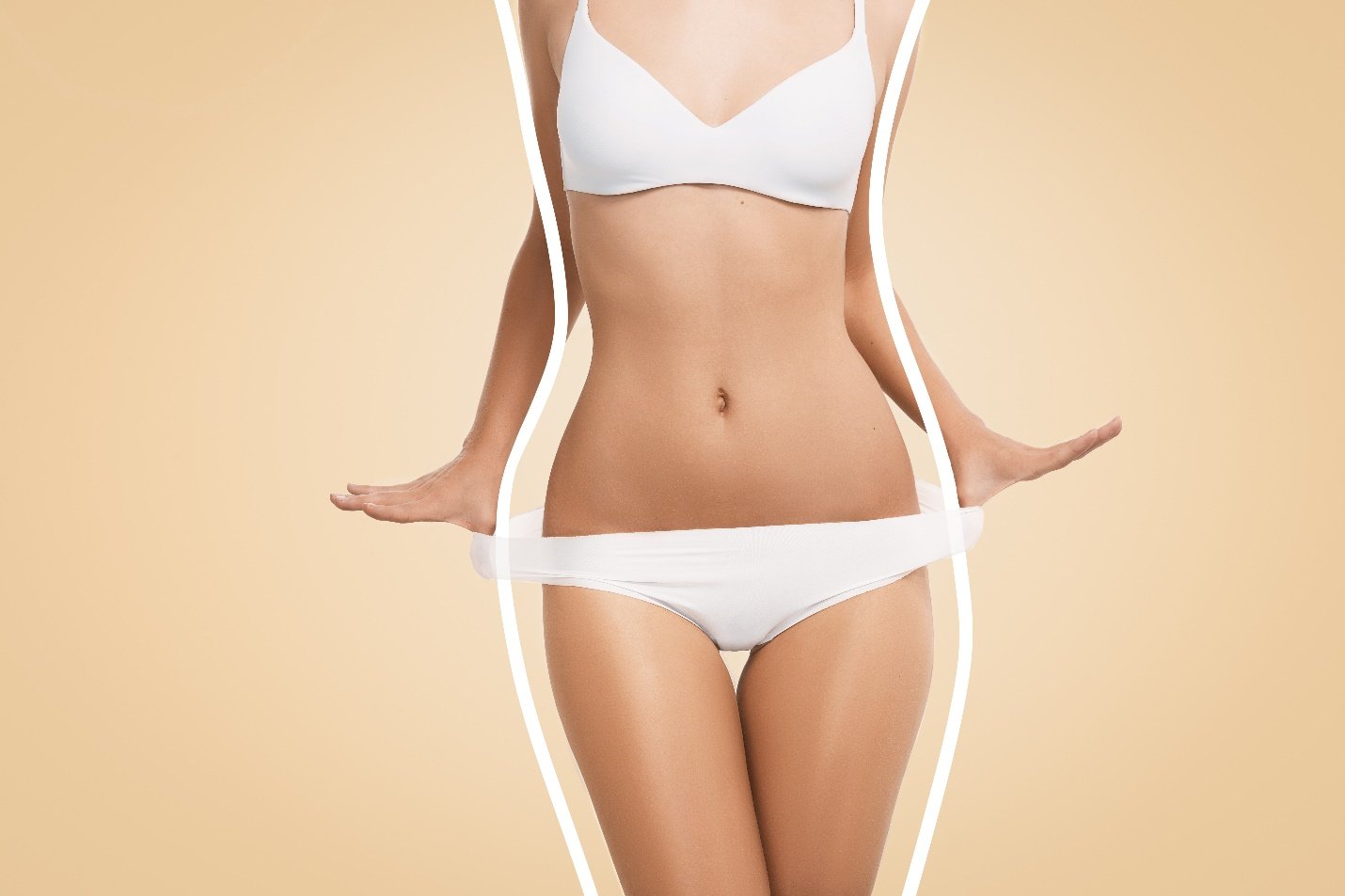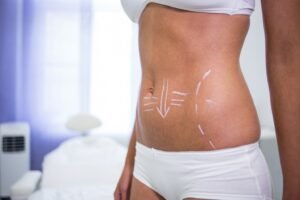Liposuction, also known as lipectomy or fat suction, is a cosmetic surgery procedure designed to remove excess fat deposits from specific areas of the body. It’s a popular choice for individuals seeking to refine their body contours and achieve a more sculpted appearance. While not a weight-loss solution, liposuction can effectively target stubborn pockets of fat that resist diet and exercise efforts.
How Does Liposuction Work?
Liposuction is typically performed under general or local anesthesia, depending on the extent of the procedure. Here’s a breakdown of the general steps involved:
- Tumescent Technique: In most cases, a tumescent technique is employed. This involves injecting a tumescent solution into the targeted area. This solution comprises lidocaine (a local anesthetic), epinephrine (a vasoconstrictor to minimize bleeding), and saline (to inflate the tissue).
- Cannulation: Small incisions are made strategically in inconspicuous locations near the treatment area. A thin tube called a cannula is inserted through these incisions.
- Fat Removal: The cannula is connected to a suction device that creates a vacuum. This vacuum helps to break down and suction out the liquefied fat cells. The movement of the cannula ensures even fat removal and minimizes tissue damage.
Types of Liposuction Techniques
While traditional liposuction remains the most common technique, several advancements have emerged, each offering specific advantages depending on the patient’s needs:
- Traditional Liposuction: This is the original technique mentioned above, using a cannula and suction to remove fat.
- Tumescent Liposuction (WAL): As described earlier, tumescent liposuction utilizes a tumescent solution to numb the area, minimize bleeding, and facilitate fat removal.
- Ultrasound-Assisted Liposuction (UAL): UAL utilizes ultrasound waves to liquefy fat cells before suctioning them out. This technique is particularly effective for denser fat deposits and offers improved precision during sculpting.
- Laser-Assisted Liposuction (LAL): LAL employs laser energy to liquefy fat cells and potentially tighten the skin through collagen stimulation. This method may offer some skin tightening benefits alongside fat removal.
Areas Commonly Treated with Liposuction
Liposuction can be used to address stubborn fat deposits in various body regions, including:
- Abdomen: A popular area for liposuction, targeting the stomach, flanks (love handles), and lower abdomen (pooch).
- Hips and Thighs: Liposuction can address outer thighs (saddlebags), inner thighs, and hips for a more contoured appearance.
- Buttocks: Liposuction can help sculpt the buttocks and achieve a more lifted or defined look.
- Back: Liposuction can target bra bulge, love handles extending to the back, and lower back fat deposits.
- Arms: Liposuction can address excess fat in the upper arms (triceps) for a more toned look.
- Neck and Chin: Liposuction can refine the appearance of the neck and chin area, creating a more defined jawline.
- Other Areas: Liposuction can also be used to target areas like calves, knees, and ankles in specific cases.
Benefits of Liposuction
Liposuction offers several potential benefits for individuals seeking to improve their body contours, including:
- Improved Body Shape: By removing localized pockets of fat, liposuction can significantly improve body definition and create a more sculpted appearance.
- Enhanced Self-Confidence: Achieving a desired body shape can boost self-confidence and satisfaction with one’s image.
- Improved Clothing Fit: Liposuction can help clothes sit more comfortably and flatteringly on the body.
- Easier Exercise: Removing excess fat in specific areas may improve mobility and make physical activity easier.
Potential Risks and Complications of Liposuction
As with any surgical procedure, liposuction carries potential risks and complications that should be carefully considered. These include:
- Infection: Proper sterilization techniques and antibiotic use minimize the risk of infection, but it remains a possibility.
- Bleeding: Bleeding can occur during or after surgery, although tumescent techniques help reduce this risk.
- Bruising and Swelling: Bruising and swelling are common after surgery and typically resolve within a few weeks.
- Numbness: Temporary or permanent numbness may occur in the treated area, depending on the extent of nerve involvement.
- Skin Irregularities: Liposuction can sometimes lead to unevenness, rippling, or waviness in the skin surface.
- Unsatisfactory Results: It’s crucial to have realistic expectations about results. Liposuction is not a magic solution and may require multiple sessions or complementary procedures for a desired outcome.
Recovery After Liposuction and Long-Term Considerations
Recovery from liposuction typically takes several weeks, depending on the extent of the procedure and the individual’s healing process. Here’s what you can expect:
- Initial Discomfort: You may experience some pain, discomfort, and swelling after surgery. Pain medication will be prescribed to manage these symptoms.
- Compression Garments: You will likely be required to wear a compression garment for several weeks following surgery. This helps to reduce swelling, support the treated area, and promote healing.
- Drainage Tubes: In some cases, temporary drainage tubes may be inserted to remove excess fluid after surgery.
- Restrictions on Activity: Strenuous activity will be restricted for a period to allow the body to heal properly. Gradually resume activity as instructed by your doctor.
- Follow-Up Appointments: Regular follow-up appointments with your surgeon are crucial to monitor your progress and address any concerns.
Long-Term Considerations
Liposuction results can be long-lasting with proper maintenance. Here are some key factors to consider:
- Maintaining a Healthy Weight: Maintaining a healthy weight through diet and exercise is essential to preserve your liposuction results. Weight gain can lead to fat accumulation in other areas.
- Lifestyle Choices: Healthy lifestyle choices like a balanced diet and regular exercise contribute to maintaining a sculpted physique.
- Skin Elasticity: The elasticity of your skin plays a role in the final outcome. Younger patients with good skin elasticity tend to achieve better liposuction results.
- Aging: As you age, your skin will naturally lose some elasticity. This may lead to some degree of skin laxity over treated areas.
Choosing a Qualified Plastic Surgeon for Liposuction
Choosing a board-certified plastic surgeon with extensive experience in liposuction procedures is critical for achieving safe and optimal results. Here are some key factors to consider:
- Board Certification: Ensure your surgeon is board-certified by the American Board of Plastic Surgery (ABPS).
- Experience: Look for a surgeon with a proven track record of successful liposuction procedures.
- Consultation: During your consultation, discuss your goals, expectations, and any medical conditions you may have. The surgeon should explain the procedure, potential risks, and recovery process in detail.
- Before-and-After Photos: Reviewing before-and-after photos from previous patients can give you an idea of the surgeon’s skills and potential outcomes.
- Facility Accreditation: Choose a surgery center accredited by a reputable organization like the American Association for Accreditation of Ambulatory Surgery Facilities (AAAASF).
Liposuction is a valuable tool for body contouring, offering the potential to achieve a more sculpted and desired physique. However, it’s important to have realistic expectations, understand the risks involved, and prioritize your overall health and well-being. By choosing a qualified plastic surgeon and following a healthy lifestyle, liposuction can be a successful approach to achieving your body goals.
Additional Considerations
Here are some additional points to consider when deciding if liposuction is right for you:
- Non-Surgical Alternatives: Explore and discuss non-surgical fat reduction options like CoolSculpting with your doctor. These may be suitable depending on your goals and the amount of fat you wish to remove.
- Mental and Emotional Readiness: Be sure you are mentally and emotionally prepared for the procedure and its potential outcomes.
- Cost Factors: The cost of liposuction varies depending on factors like the surgeon’s experience, the type of technique used, and the geographic location. Be sure to factor in the total cost, including anesthesia fees, facility charges, and post-operative care.
Remember, liposuction is a surgical procedure and not a substitute for a healthy weight loss plan. By carefully considering these factors and discussing your options with a qualified plastic surgeon, you can make an informed decision about whether liposuction






